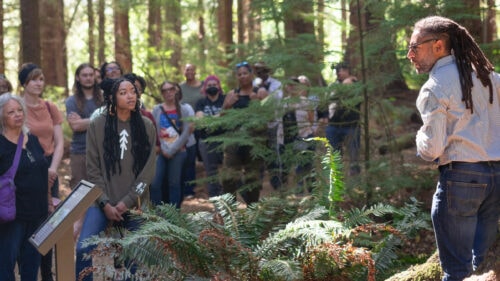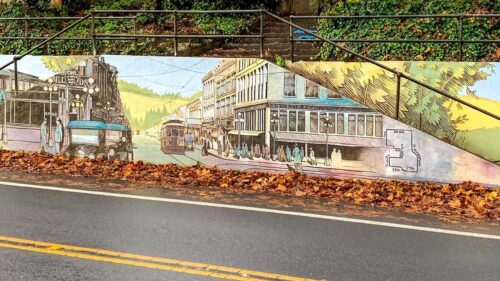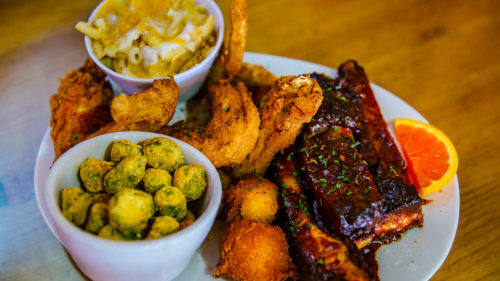When you think of Black art in America, what comes to mind? To me the phrase conjures images of the Harlem Renaissance from the past and the annual National Black Arts Festival in the present. But nothing prepared me for the colorful and passionate flourishing of Black art and history I saw on display in Portland recently.
The Portland Art Museum’s new temporary exhibition “Black Artists of Oregon” sheds light on Black art in a place one might not expect to see it flourishing. Running through March 17, 2024, and curated by guest curator Intisar Abioto, the exhibition highlights and celebrates 69 Black artists — with well over 200 pieces — who have shaped Oregon’s art scene for generations and inspired countless others artists across the country. The exhibit is also the first of its kind to consider the work of Black artists collectively in Oregon.
Here’s what to expect at the exhibit and how to continue learning about Black art and culture in Portland.
Art Across Generations
Back in 2018 Abioto — an artist herself — began researching the lineage and legacy of Black artists in Oregon. Art, in all of its many forms and mediums, is intrinsically tied to culture, and Black American culture is rooted in stories passed down from generation to generation.
“Understanding the efforts of Black arts elders and forebears reveals strong foundations laid, intergenerational power and legacy,” says Abioto. “There’s much in Oregon’s history of Black exclusion that would erase us, tell the story as if we were never here,” Abioto explains. “No one generation holds the story. We all must be engaged.”
In the exhibit, the ties across generations soon become apparent. Homages to family and ancestors appear in photographs, paintings and abstract representations. Works by artists like Isaka Shamsud-Din — who helped cultivate Portland’s own Black Arts Movement from the late 1960s to the early ’80s — bring mentors and mythological heroes alive. Shamsud-Din’s “Rock of Ages,” for example, uses vibrant strokes of warm, rich color to enhance a portrait of the artist’s father, a farmer who was the first to encourage and inspire Shamsud-Din’s artistic goals.
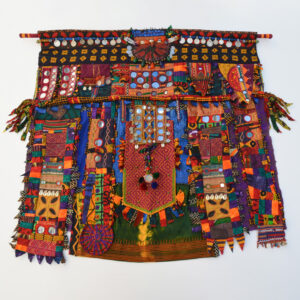
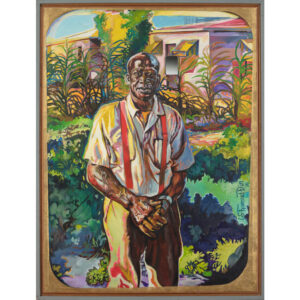
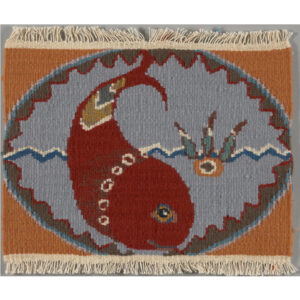
Engage With Black Artists and Their Legacy
This portrait and many more colorful depictions of Black Americans through the generations remind the viewer of the link between past and present. The work of JL Quenton depicts childhood obstacles and shelter in several abstract paintings with broad, powerful brush strokes on a brilliantly colored canvas. Adriene Cruz’s “Flying Carpet Coat” patches together vibrant pieces of African textiles and incorporates beadwork in a living testament to her heritage. Dancer and painter Latoya Lovely exposes the vulnerability of her own healing process in her painstakingly detailed mixed-media portraits “And Still I Rise” and “The Neon Woman.”
More highlights include pieces with tongue-in-cheek social commentary, like Ray Eaglin’s “Maid in U.S.A,” which depicts a Black woman cleaning. Sadé DuBoise’s emotionally-charged pieces include “The Collective Mourn,” a study in moody greens, blacks and greys that draws a pointed connection between a family grieving over the body of a Black man and classical European paintings depicting the lamentations of Jesus.
Though the exhibition is a temporary one, one of its aims is to encourage institutions around the country to address their oversight of Black artists, according to Abioto, who calls on art museums to “respect their energy, roots and labor.” From the wealth of artwork on display, it’s clear that Black artists have much to offer to any comprehensive collection.
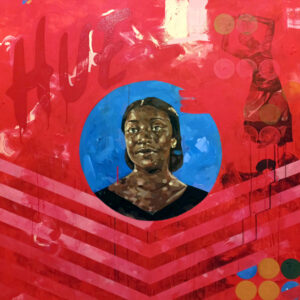
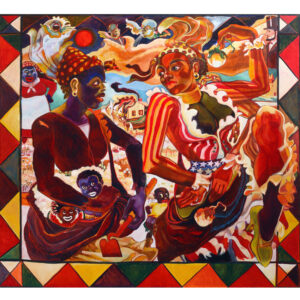

Art for the Community, by the Community
With over 200 pieces showcased in the exhibit, visitors get an introduction to the breadth of Oregon-based Black artists as well as their passion to pass down creative sparks and community to upcoming generations.
Many of the elders in the exhibition — including Thelma Johnson Streat, Charlotte Lewis and Shamsud-Din — have also been art educators in the community, working to empower young people through creative outlets. Sherrian Haggar, a sculpture and visual artist, created the Portland Parent Union, an organization that helped parents of school-age children to advocate for themselves.
“Every time artists create, they are passing on information to the youth,” says Richard Brown, a Black Portlander, photographer and community activist. Involved in multiple programs servicing kids in the Portland area, such as the Blazers Boys & Girls Club, Brown advocates for taking children to art museums and theaters so that they can be exposed to how art impacts life. “We need to show [children] the way. Have them around while you create art.”
That passion for investing art and creativity into young people reflects in the works of younger artists like Penda Diakité, manuel arturo abreu and Christine Miller — three of my favorites in the upcoming generation — as they carry on the tradition of using art to amplify joy, light and love in the Black community. They also dismantle anti-Blackness in the Americas and reiterate the importance of their experiences and work in the larger art world.

Storytelling Beyond the Art
Storytelling and the importance of sharing experiences is another major theme of the exhibition. “One of the great things about people is that they are impacted by the things they see,” Brown says. In a country that has historically excluded, silenced and prohibited certain voices, it is imperative that Black art and art from marginalized communities be given their proper dues. And for Oregon in particular, a state that legally banned Black people upon its founding, that awareness is long overdue.
Bobby Fouther, a pillar in Portland’s visual and performing arts scene, stresses the magnitude of “Black Artists of Oregon” and other projects that highlight Black artists. “This [exhibition] should lead to many more kitchen-table conversations.”
Other Ways to Experience Black Culture in Oregon
Work by Black artists can be found across the city of Portland and throughout the state, often in public spaces like community buildings and schools, and often depicting powerful scenes from Black history. Muralists like Nia Musiba and Adia M. Gibbs bring color to Portland’s street art in the Central Eastside Mural District and decorate buildings along Northeast Martin Luther King Jr. Boulevard and Shaver Street.
In Portland Marcus Lattimore, Jae Nichelle and other Black written- and spoken-word artists can often be found at regular open-mic events like “The People’s Poets,” hosted at Akadi restaurant. Artwork can also be found at BIPOC-focused artisan markets such as Come Thru Market and the Ori Gallery.
The Oregon Black Pioneers — celebrating their 30th anniversary in 2023 — is Oregon’s only historical society dedicated to the preservation and recognition of Black history throughout the state. See their website for a full schedule of upcoming events, including tours in Portland and other parts of Oregon.
